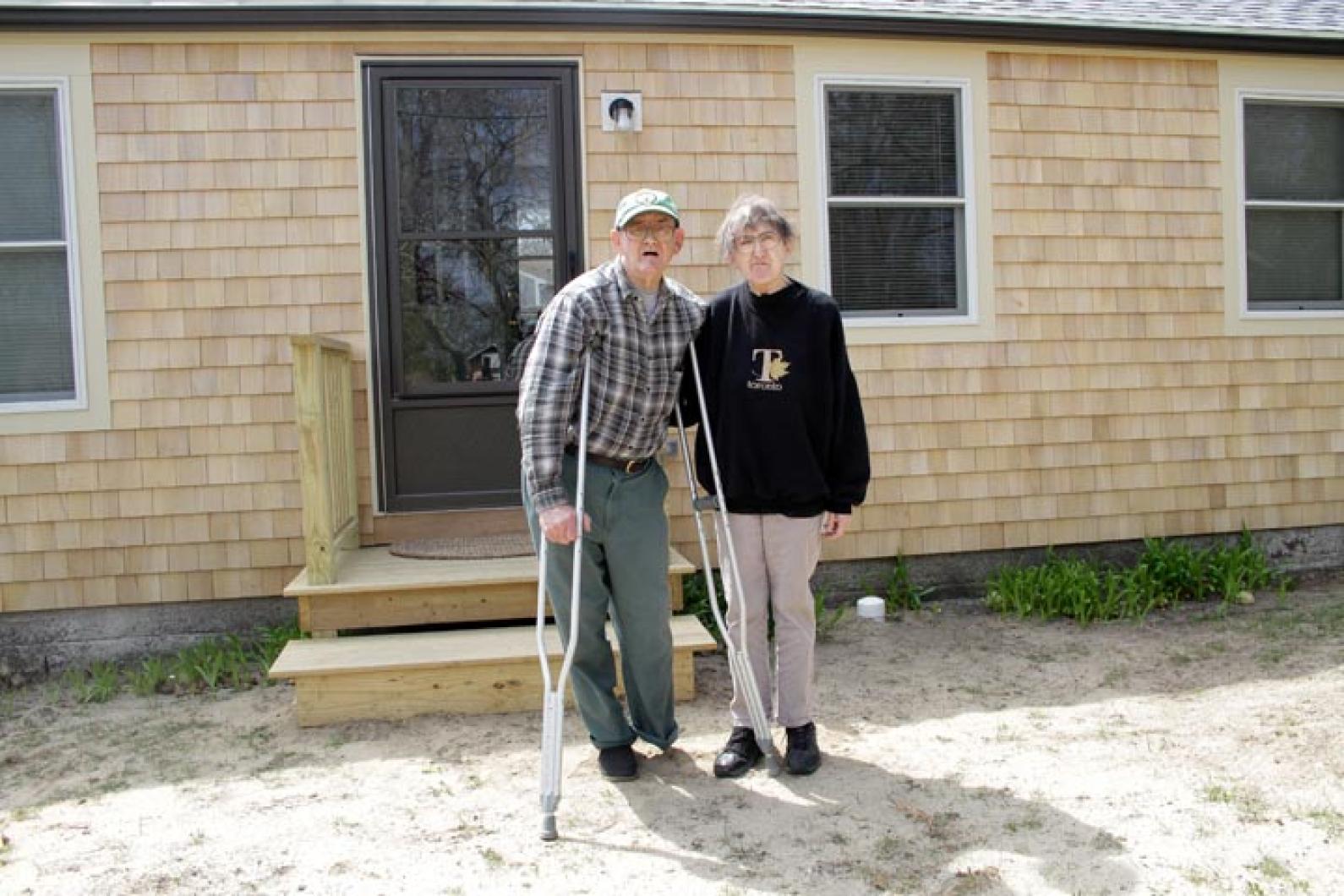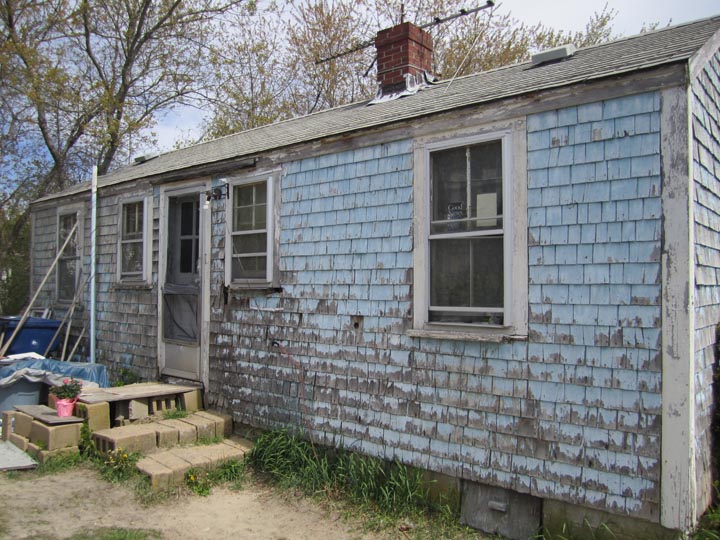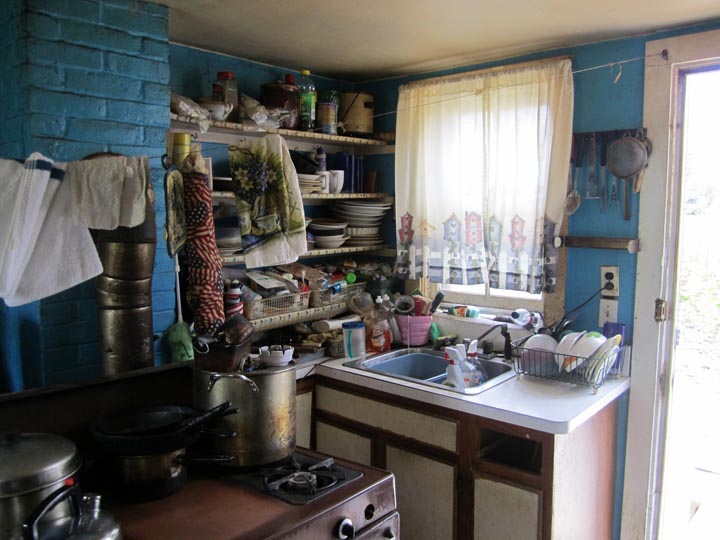Ralph Gross stood in his brand new living room one afternoon this week, the freshly painted yellow walls and new furniture a far cry from the room that once held two bunk beds for his five sisters and mother.
“We washed the clothes over there,” Mr. Gross, 74, said pointing to the new red bathroom, once a washroom and now a full bath and handicap accessible.
“It’s pretty much the same, but so much better,” he said with a warm smile.
As the last thwacks of hammers ring out across the Island before the summer season, a smaller and quieter project has given a new lease on life to Mr. Gross’s house on Pinehurst Road in Edgartown. With help from a series of state and federal grant programs, a total of $72,500 was secured for the project.
The majority of the funding, $35,000, came from the federal Community Development Block Grant (CDBG) rehabilitation program, which normally grants monies to homeowners for small fixes such as leaky roofs, drafty windows and inadequate heating, as well as child care subsidies. The grants were administered by Melissa Vincent of The Resource Inc., the group responsible for allocating the block grant funds for all of the Island towns.
Standing in the kitchen a week before Mr. Gross and his wife Lucille moved in, Mrs. Vincent recalled her hesitance about taking on the project. “When this project first came to me a year and a half ago . . . I looked at it and went, are you kidding? We’re a moderate rehab block grant,” she said. “But I’ve never walked away from a project, and I knew the homeowners were going to live here — they didn’t have anyplace else they could go . . . there’s not a lot available, and they love their home.”
The house was going to need more than just a quick fix. It needed an overhaul, and it was more than the block grant funding could provide.
“It was not a safe place for them to live and it was going to take more than just us,” Mrs. Vincent said. “It was a deteriorated block foundation, literally on cement blocks and below it was dirt. It teetered when you walked in.”
She turned to two other sources of funding. Mr. Gross is an amputee and qualified for disability funds from the Southeastern Middlesex Opportunity Council (SMOC), and Mrs. Vincent was able to secure $30,000 from that group. She also applied for funds through the U.S. Department of Agriculture’s rural grant program for an additional $7,500, the maximum amount in a lifetime a homeowner can use.
The Pinehurst project used the remaining $35,000 in funds from the 2010 block grant funding, and was one of 18 projects in Edgartown, Aquinnah and Chilmark. In Oak Bluffs and Tisbury, 2010 block grant funds went towards 17 projects.
“When we get into these properties, a lot of times they’ve made do for many, many years. We take care of people who are very proud of what they have and take care of themselves as best they can and they don’t like to reach out for help until they realize there’s no other way to take care of something,” she said. “I’ve worked with amazing homeowners who have done so much on their own prior to coming to us...it would break your heart.”
Island towns missed out on about $2 million of block grant funding for 2011 due to a clerical error in the application process. Mrs. Vincent said she has applications rolling in every day for 2012 grant funding, which is expected to be announced in May.
The Vineyard has benefitted from more than $14 million in block grant monies over the past eight years, funds that have gone towards rehabilitating 250 homes and provided 77 Island families with child care subsidies.
In the wake of the missed funding this year, Mrs. Vincent said she looked to alternative methods to stretch the grant money as much as possible, and the Pinehurst project was an example of how funding resources can work together.
“A lot of times people have enough money to buy a house or they inherit a house and can pay taxes, but they can’t afford to do the maintenance, which is the beauty of these CDBG programs,” Mrs. Vincent said. “If we lose out on CDBG we don’t have anything,” she added. “We have homeowner ingenuity and that usually involves tarps and buckets.”
Homeowner ingenuity was what got the Gross family through the past several years, until it was too much to handle on their own. Construction began in October, and during the winter months Erin Kokoszka at the Edgartown Council of Aging arranged through the Friends of the Edgartown Council on Aging to pay for a winter rental for the couple until the house was finished. In the meantime, it took a village to complete the work, with donations from Heritage Construction, Island Water Source, John Keene Excavation, Derek’s Landscaping, and material donations for everything from the carpet and hardwood floors to garbage removal and plastering.
A handicap accessible ramp, bathroom, and wider doors transformed the former two-bedroom home to a one-bedroom with a new kitchen and living room. For the first time, the Grosses were able to pick things like the bright paint color palette, countertops and cabinetry and hardware.
“These programs change lives,” Mrs. Vincent said. “When people get to stop worrying about their housing situation, whether their roof is going to cave in, whether their cesspool is going to overflow, whether their windows are letting in as much cold air as they’re paying for their heating bills...all of the sudden they have a little bit of freedom to themselves.” In turn, this enables them to turn their attention to outside activities, “and they’ll want to make a difference [in their community]. I’ve seen it throughout this program,” she added.
Sitting in her new lilac bedroom, a pet guinea pig on the windowsill and their dog Trixie barking in the background, Mrs. Gross sorted through old family pictures and unpacked boxes as Mr. Gross looked on.
“We’re very happy to be home,” he said.









Comments
Comment policy »